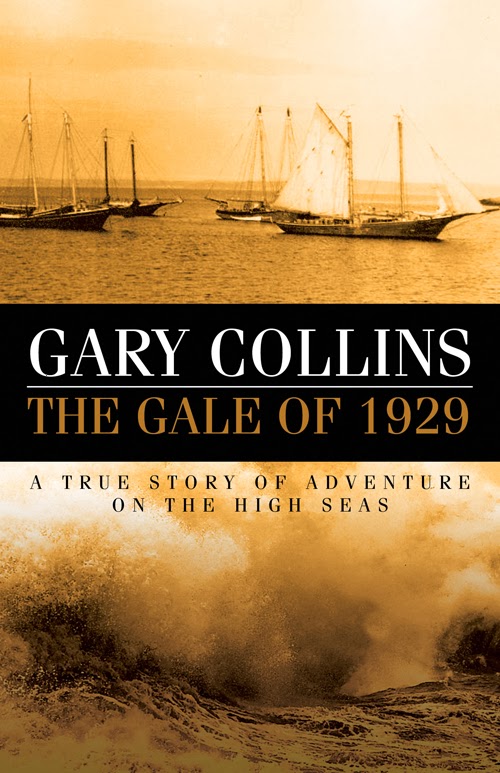The Gale of 1929 by Gary Collins
The Gale of 1929
by Gary Collins
Flanker Press (2013)
Review by Roger Douglas
Bursey
Author Gary Collins is no stranger to the
publishing world. This award winning and prolific author from Newfoundland has
penned his latest manuscript entitled, The Gale of 1929.
Published in 2013, the book tells the
incredible and gripping story of survival on the high seas when 11 schooners set
sail from the protection of St. John’s harbour on November 29th, only
to head directly into the clutches of hurricane force winds. All eleven vessels,
brimming with Newfoundlanders, unsuspectingly weighed anchor to set sail, making
way for their respective ports, like Bonavista, Trinity, and Wesleyville.
Following along our rugged coast, each
crew weathered the gale’s merciless wrath quite differently. Although the Water
Sprite was the only vessel to make it home, most of the crews of the other
vessels did so, each with a story to tell.
Not unlike the seasoned schoonermen
battling the famous gale, Collins manages to navigate his way around each story
as seen through the eyes of the characters involved. It may be that I, myself,
had an affinity for the characters, having been through a similar situation on
a 115-foot schooner. But, it felt to me like Collins took me up and down each
wave, and let me inside each heroic task of survival.
One example of survival came from
the crew of the Neptune II, who were set adrift after the gale for 48
days. The boys ran out of fresh water,
so they fashioned a still out of copper tubing from their 10 hp Make and Break
engine. Using their still to convert salt water into fresh water to keep them
alive, they eventually drifted to Scotland and returned to St. John’s on the SS
Nova Scotia.
Collins also tells of the parallel
ingenuity and bravity of Captain John Barbour and his crew of the Gander Deal,
who doused a ham with kerosene, lit it, and hoisted it up the spar to signal to
a distant light in the dark—a passenger liner. To Collins, the ham “... flared and
smoked as the meat’s dripping hot fat was lifted skyward on the gantline.” It was Christmas Eve when the men arrived home,
as “several black figures approaching the village on foot, from up the Arm.”
The richness of Collins’ book also
comes from the stories of the women folk, those aboard the schooners and one who
remained on land. In fact, Collins
dedicates the book to the “women who stayed on shore, then and now.” He tells of
Mary Sturge, a scullery maid from Newtown, who recalls how the towns’ men went
to the telegraph office, day after day, for 48 days, waiting for word of the
Neptune II. He also recounts Esther Humphries’ near-death experience aboard
that same vessel and the how the men prepared to bury her at sea.
This
book, published by Flanker Press, is a must read, especially for those who love
adventure on the high seas. Although I have to admit that this is the first
book by Collins I’ve ever read, it won’t be my last. Collins’ next book,
retelling the story about the 1914 sealing disaster as seen through the eyes of
the sealers, will soon be released by Flanker Press. I can’t wait!
Roger Douglas
Bursey is a musician, writer and a Newfoundlander currently living in Prince
Edward Island.



